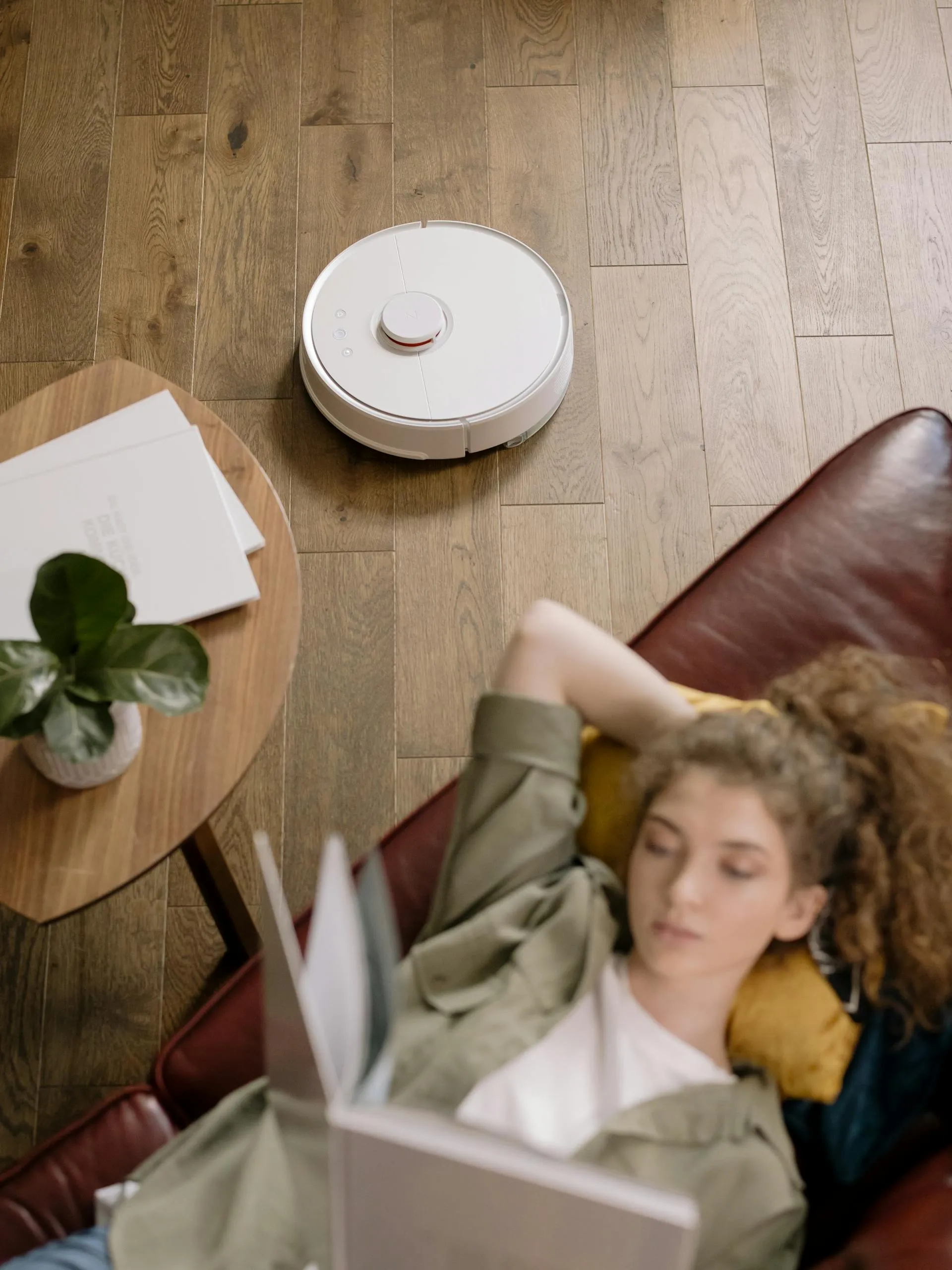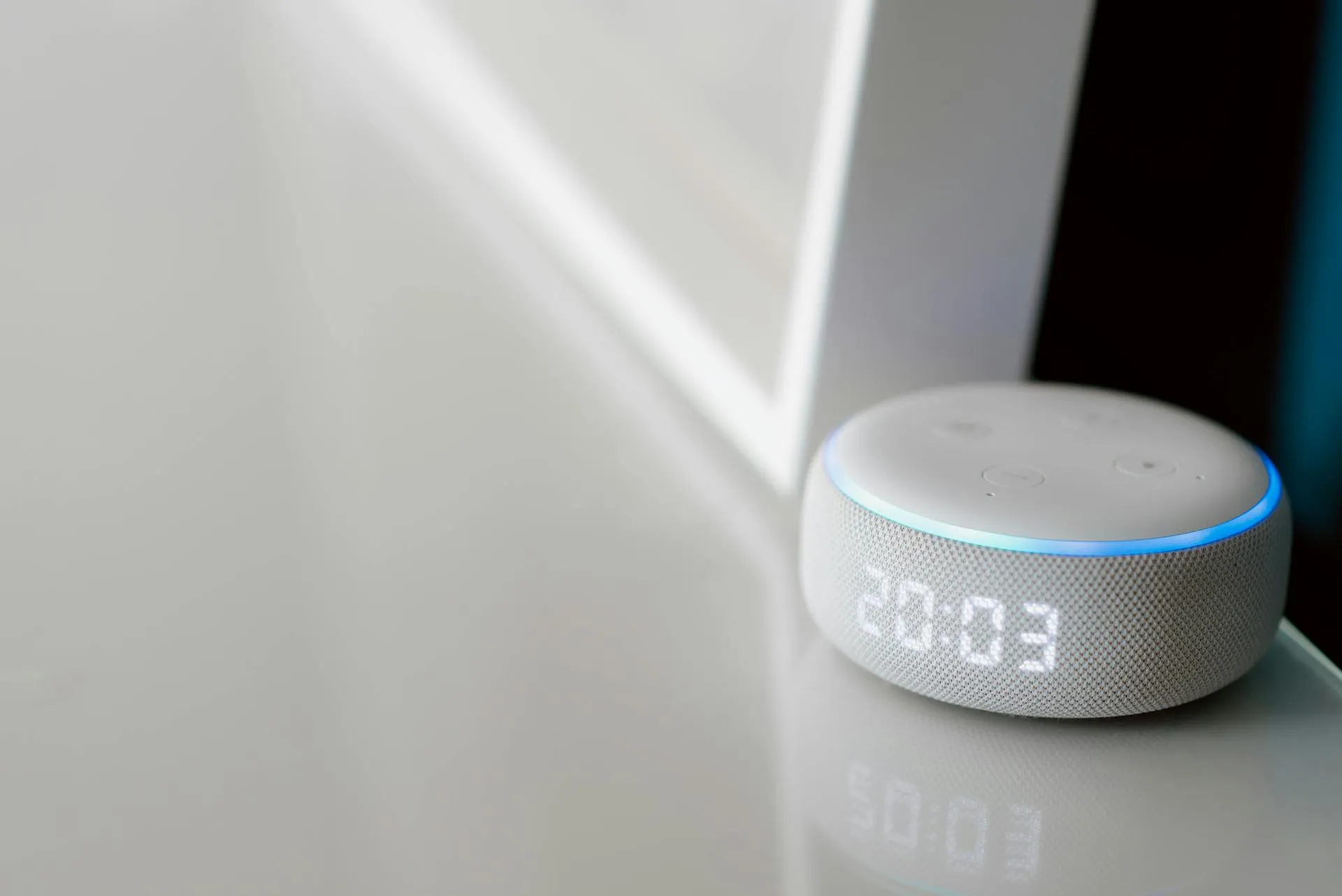Without a doubt, the Automation of domestic tasks is modernizing the way we handle our daily responsibilities at home. From robots that clean the floor to artificial intelligence (AI) home assistants that control our appliances, technology is increasingly simplifying our lives. Thanks to these advances, performing everyday tasks such as cleaning, cooking or managing home security is easier, more efficient and faster than ever before.
What is Automation of domestic tasks?
The Automation of domestic tasks refers to the use of technological devices, robots and AI-enabled software to perform or assist in daily household tasks. This technology allows activities such as cleaning, temperature control, security and appliance management to be performed automatically or with minimal human intervention.
One of the best known examples are robot vacuum cleaners, such as the Roomba, which have revolutionized household cleaning. Equipped with advanced sensors and algorithms, these devices can clean the floor efficiently, avoiding obstacles and returning to their charging base when necessary. This type of technology has allowed people to save time and effort, freeing up mental space for other activities.

AI Home Assistants: The Smart Home
AI-based home assistants, such as Amazon’s Alexa or Google Assistant, are another critical piece in the Automation of domestic tasks. These devices control a wide range of tasks, from turning on lights and adjusting the temperature to making online purchases or scheduling reminders. All of this can be done through simple voice commands, allowing the home to be managed more efficiently.
These assistants not only simplify household tasks, but also enable the integration of multiple smart devices, creating an interconnected home ecosystem. For example, an assistant can synchronize with the home’s smart thermostat to automatically adjust the temperature based on the outside weather or user preferences. Similarly, they can control home security systems, turn appliances on and off, or even manage entertainment devices.

Household Robots: Beyond Cleaning
While robot vacuum cleaners are the most popular example, the Automation of domestic tasks has given rise to a new generation of robots that go beyond cleaning. There are robots that specialize in gardening tasks, such as autonomous lawn mowing, or robots that assist in the kitchen, such as Moley, a cooking robot that prepares complex dishes with professional precision.
These domestic robots are equipped with sensors and cameras that allow them to interact with their environment and learn from the user’s preferences. Thanks to AI, these robots can adapt to different spaces and perform tasks with a high degree of efficiency.
One area that is gaining popularity is automation in the care of elderly or disabled people. Robot assistants can help these people with activities such as getting out of bed, reminding them to take medication, or even detecting falls and emergencies. This technology not only improves quality of life, but also offers peace of mind to family members.
Benefits of Automation of Domestic Tasks
The Automation of domestic tasks offers numerous benefits, both in terms of convenience and efficiency. Here are some of the most prominent ones:
- Time Savings: Robots and home assistants allow tasks to be performed autonomously, saving valuable time for home occupants. Activities such as cleaning, cooking or managing security are simplified or performed automatically.
- Enhanced energy efficiency: AI-enabled home assistants can optimize energy use. For example, they can turn off lights when they are not needed or adjust heating and air conditioning based on home occupancy, resulting in lower energy consumption.
- Increased security: AI security systems can monitor the home in real time, detect suspicious movements, and alert homeowners in case of an emergency. These systems can also be integrated with security cameras and motion sensors for more comprehensive surveillance.
- Adaptability: Intelligent robots and devices can learn from user habits, adapting to their preferences and improving their performance over time. For example, a robot vacuum cleaner can identify the most frequented areas of the house and clean them more frequently.
- Comfort and accessibility: For people with reduced mobility or disabilities, the Automation of domestic tasks is a breakthrough. These technologies facilitate the performance of daily tasks, offering greater independence and comfort.


The Future of Home Automation
The future of Automation of domestic tasks looks promising. As technology advances, home devices will become increasingly intelligent, with better capabilities to learn and adapt to users’ needs. In addition, the integration of technologies such as 5G will enable faster communication between devices, making homes even more efficient and connected.
Advances in artificial intelligence are also expected to enable household robots to perform more complex tasks with greater autonomy. Imagine a home where robots not only clean, but also prepare meals, tend the garden and keep the home in perfect condition, all automatically.
AI is even a housemate
The Automation of domestic tasks is transforming everyday life. From robots that clean the home to AI assistants that control home appliances, these technologies are making tasks that were once time-consuming and labor-intensive easier. As technology continues to advance, homes will become smarter and more efficient, providing greater convenience, safety and quality of life.

